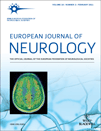Natalizumab induces a rapid improvement of disability status and ambulation after failure of previous therapy in relapsing-remitting multiple sclerosis
Abstract
Background: Natalizumab (Tysabri) is a monoclonal antibody that was recently approved for the treatment of relapsing-remitting multiple sclerosis (RRMS). Our primary objective was to analyse the efficacy of natalizumab on disability status and ambulation after switching patients with RRMS from other disease-modifying treatments (DMTs).
Methods: A retrospective, observational study was carried out. All patients (n = 45) initiated natalizumab after experiencing at least 1 relapse in the previous year under interferon-beta (IFNB) or glatiramer acetate (GA) treatments. The patients also had at least 1 gadolinium-enhancing (Gd+) lesion on their baseline brain MRI. Expanded Disability Status Scale (EDSS) scores, and performance on the Timed 25-Foot Walk Test and on the Timed 100-Metre Walk Test were prospectively collected every 4 weeks during 44 weeks of natalizumab treatment. Brain MRI scans were performed after 20 and 44 weeks of treatment.
Results: Sixty-two per cent of patients showed no clinical and no radiological signs of disease activity, and 29% showed a rapid and confirmed EDSS improvement over 44 weeks of natalizumab therapy. Patients with improvement on the EDSS showed similar levels of baseline EDSS and active T1 lesions, but had a significantly higher number of relapses, and 92% of them had experienced relapse-mediated sustained EDSS worsening in the previous year. A clinically meaningful improvement in ambulation speed was observed in approximately 30% of patients.
Conclusions: These results indicate that natalizumab silences disease activity and rapidly improves disability status and walking performance, possibly through delayed relapse recovery in patients with RRMS who had shown a high level of disease activity under other DMTs.




